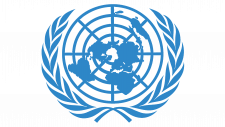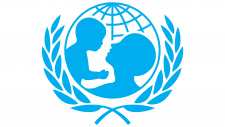Save the Children Logo
Save the Children stands as a global entity, tirelessly striving to enhance the well-being of young lives internationally. Its mission is to secure the rights of the young, furnish essential education and healthcare, and deliver prompt aid during crises. Active across diverse landscapes, the organization relentlessly pursues the vision of a brighter tomorrow for children, particularly those caught in the web of impoverishment, strife, or calamity. Through robust advocacy and dynamic developmental initiatives, Save the Children is committed to forging environments where every child can realize their inherent promise.
Meaning and history
Founded in 1919 by British humanitarian Eglantyne Jebb and her sister Dorothy Buxton, Save the Children began as a pioneering mission to aid young victims of World War I in Europe. Jebb’s innovative approach led to the creation of the Declaration of the Rights of the Child, a historic document advocating children’s rights, later adopted by the League of Nations.
Initially focusing on the plight of children in Germany and Austria, suffering due to Allied blockades, Save the Children quickly expanded its horizon. The organization’s efforts during World War II pivoted to assist British children affected by wartime devastation. Post-war, it broadened its reach, addressing global challenges like hunger, health, and education in both war-ravaged and developing regions.
As the 20th century progressed, Save the Children became a beacon of hope in times of crisis. It responded to myriad emergencies – African famines, Asian tsunamis, and numerous global conflicts – while championing children’s rights worldwide. The organization adapted to changing times, confronting issues like the AIDS epidemic, the complex Syrian refugee situation, and the effects of climate change on vulnerable populations.
In the 21st century, Save the Children remains at the vanguard of innovative humanitarian efforts. It continues to focus on critical areas: education, child protection, healthcare, nutrition, and emergency response, advocating for transformative policy changes. Operating in over 100 countries, the organization holds true to Jebb’s initial vision, striving for a world where every child has the right to a safe, healthy, and empowered life.
What is Save the Children?
Save the Children is a global humanitarian organization dedicated to improving the lives and futures of children worldwide. It focuses on providing education, healthcare, emergency aid, and advocating for children’s rights, especially in regions impacted by poverty, conflict, or disasters. The organization operates across over 100 countries, driven by the vision of a world where every child attains the right to survival, protection, development, and participation.
1900s – 1900s
The logo depicts the phrase “Save the Children” in a bold, serif font, projecting a classic and authoritative presence. To the right, a simplified icon of a child with arms raised triumphantly forms a stark contrast to the text, symbolizing hope and joy. This human figure is reduced to its most basic elements, capturing the essence of childhood in its purest form. The use of black for both text and iconography denotes seriousness and the somber realities the organization addresses. The juxtaposition of the traditional typeface with the minimalist child figure combines the organization’s longstanding heritage with its focus on the uplifting potential of its work. This design is a visual commitment to the organization’s enduring mission of protection and advocacy for children’s welfare globally.
1900s – 2022
The logo features a stylized figure of a child within a red outline, symbolizing protection and care. This central icon is encased in a circle, suggesting unity and global inclusivity. To the right, the organization’s name “Save the Children” is presented in a bold, sans-serif typeface, ensuring readability and imparting a sense of urgency and importance. The stark contrast between the red graphic and the black text emphasizes the logo’s message of action and advocacy for children’s well-being. The simplicity of the design allows for versatile use, from digital to print, resonating with the organization’s far-reaching impact.
2022 – Today
Compared to previous versions, this logo seems refreshed, with a more contemporary font and potentially streamlined design elements, suggesting a modernized vision while maintaining the core message of child advocacy and safety. The design encapsulates the organization’s mission: to safeguard and empower children globally, a message carried forth through its simplicity and impactful use of color and form.














